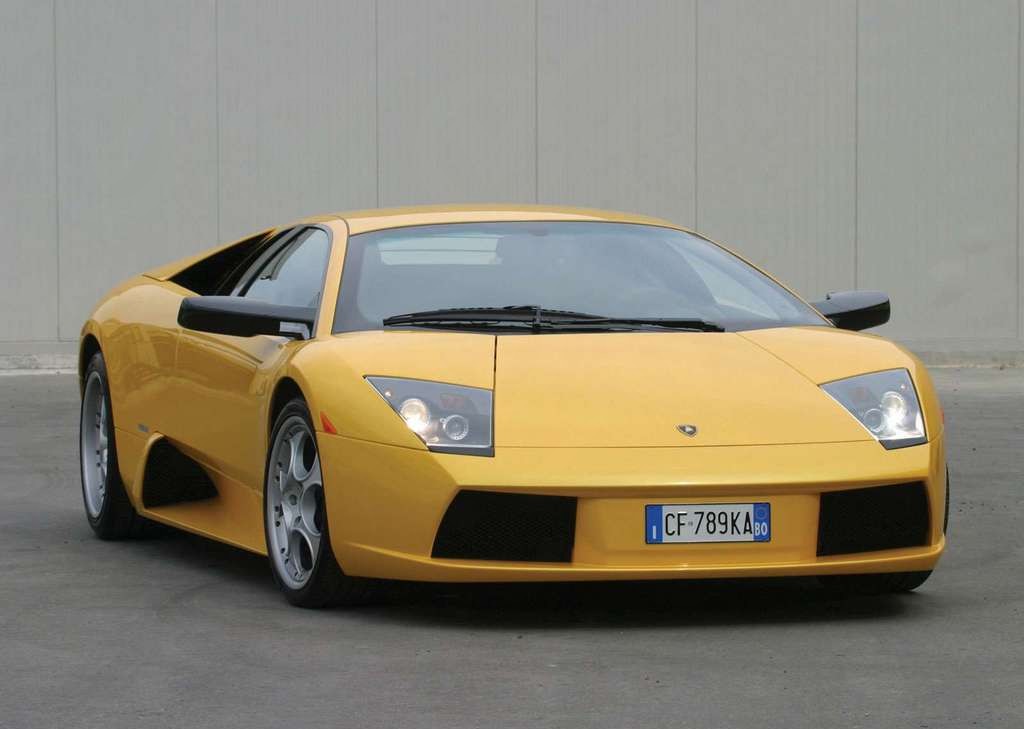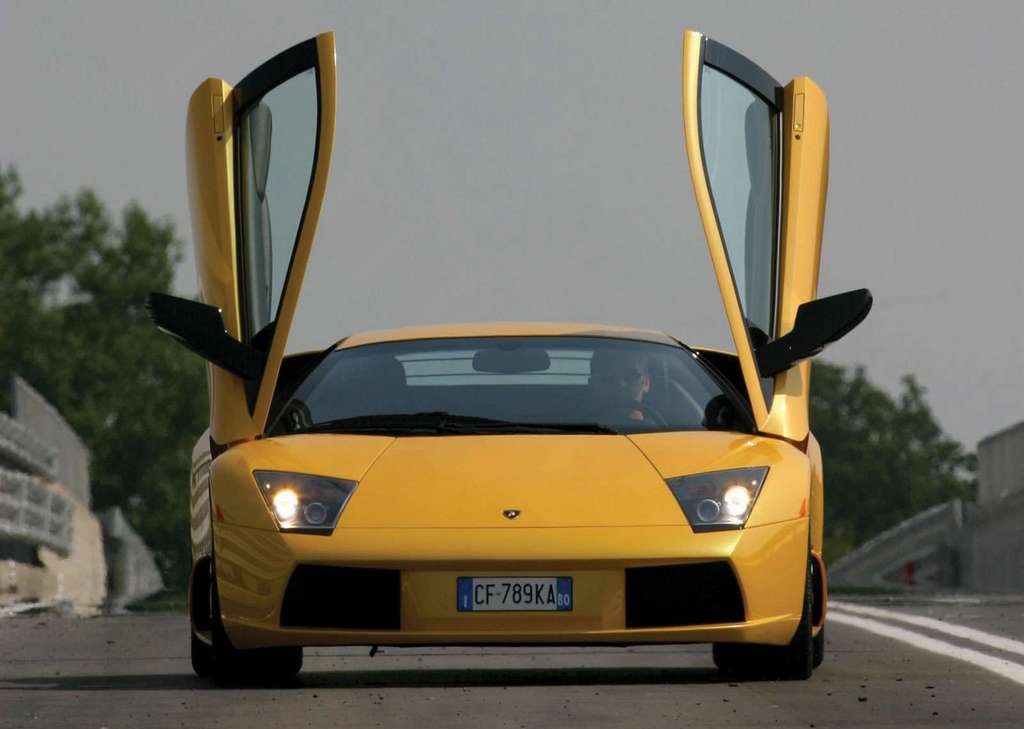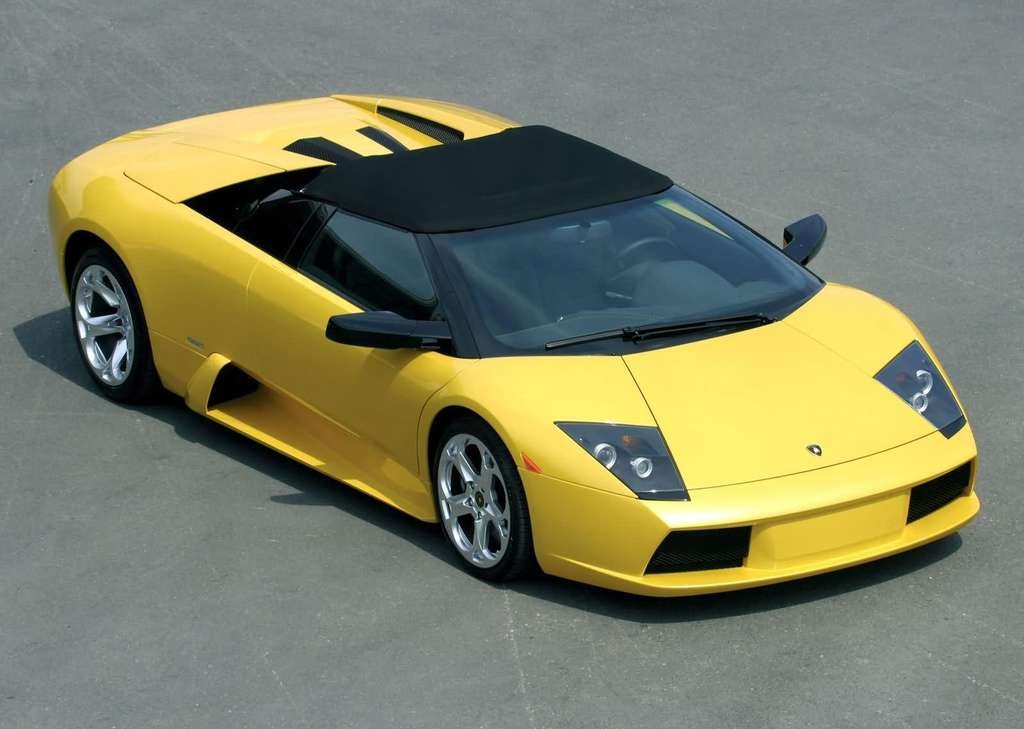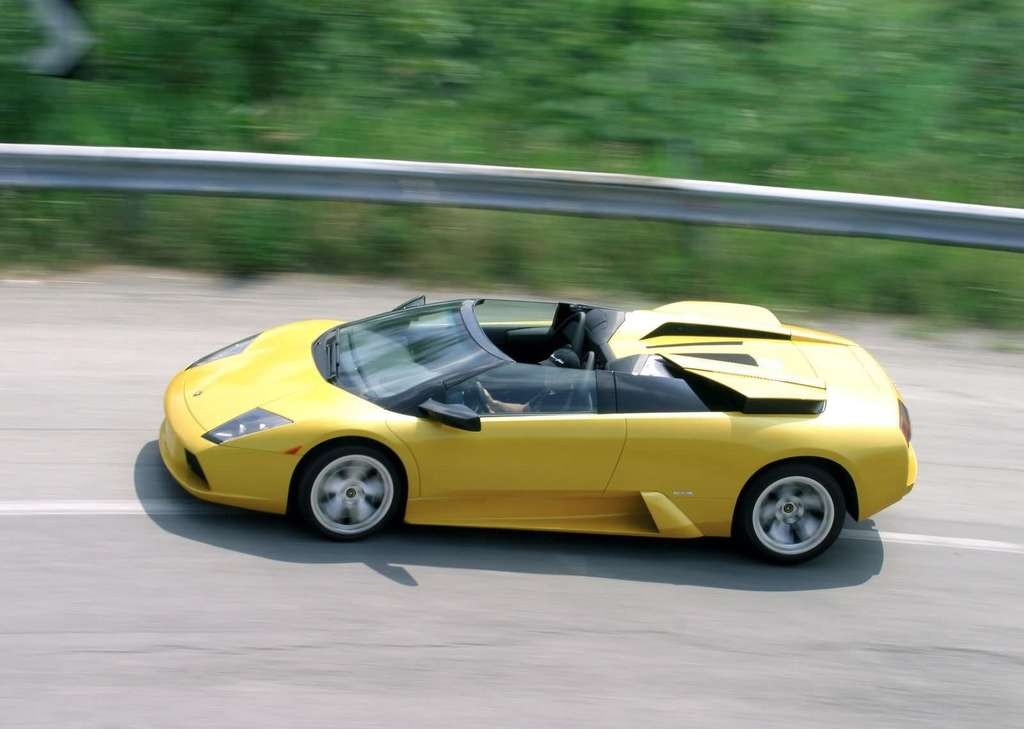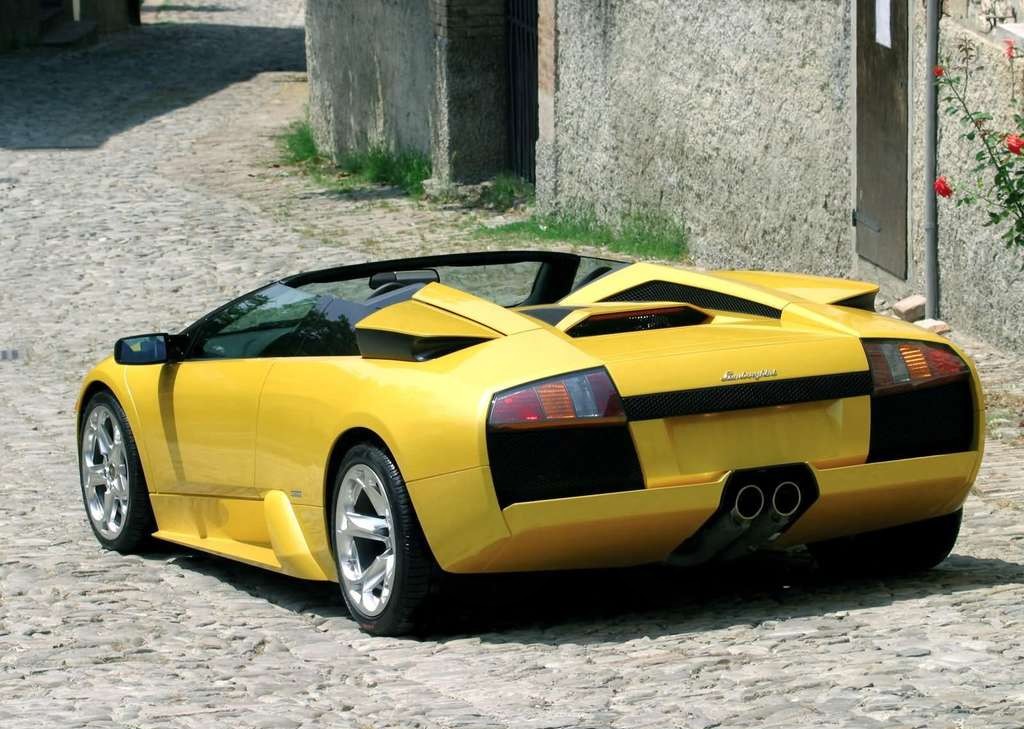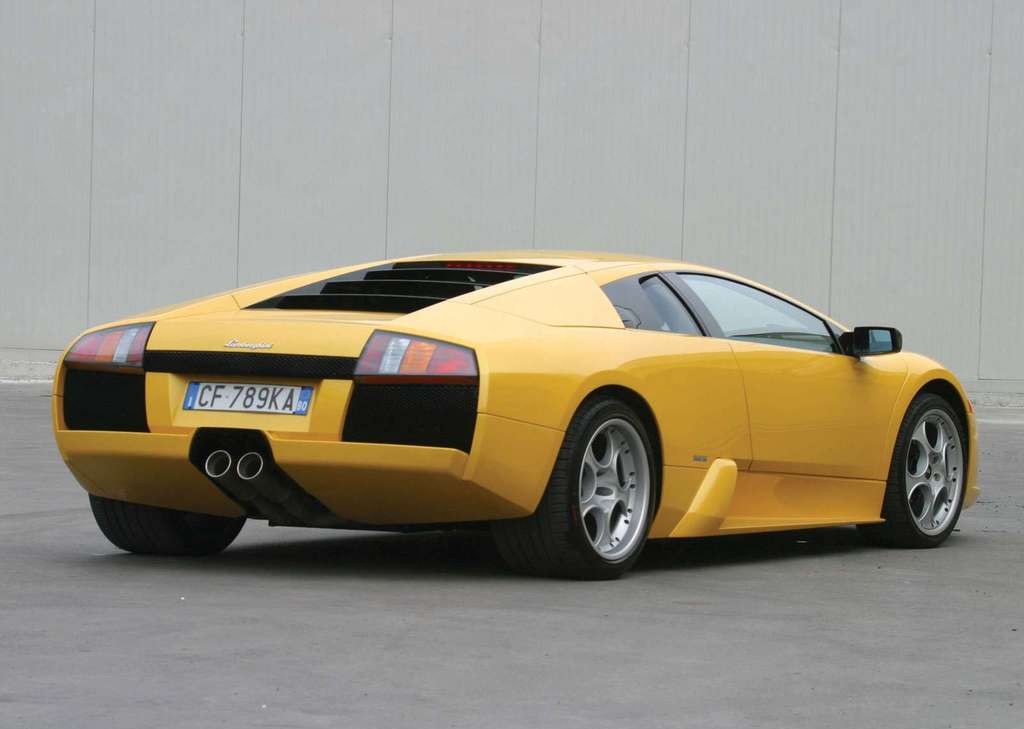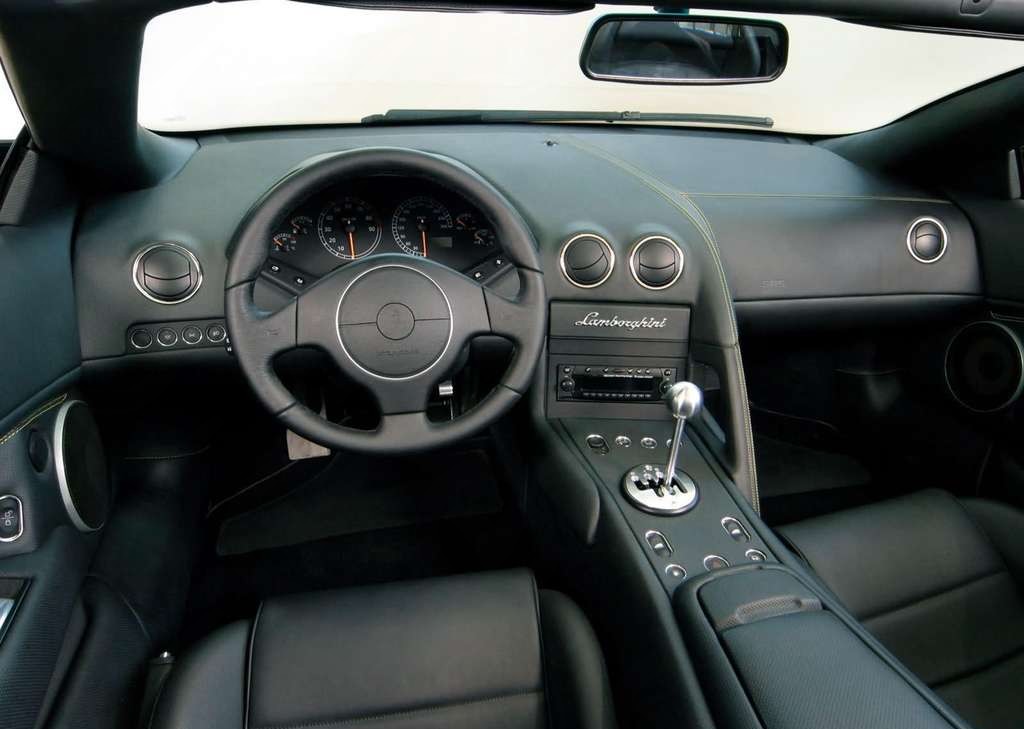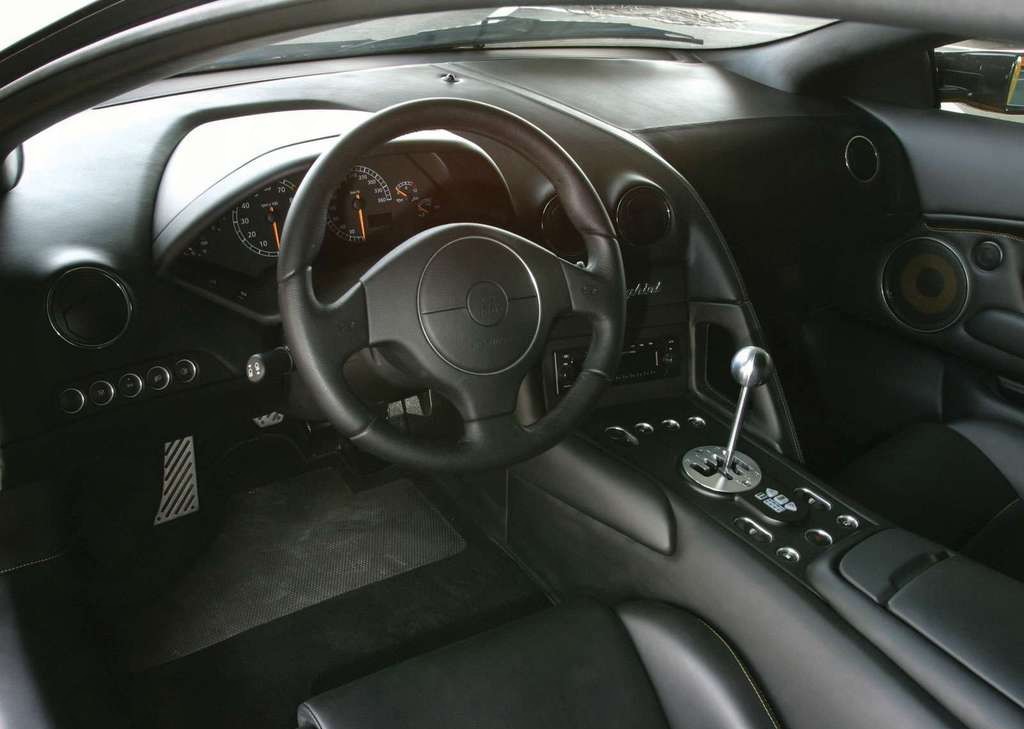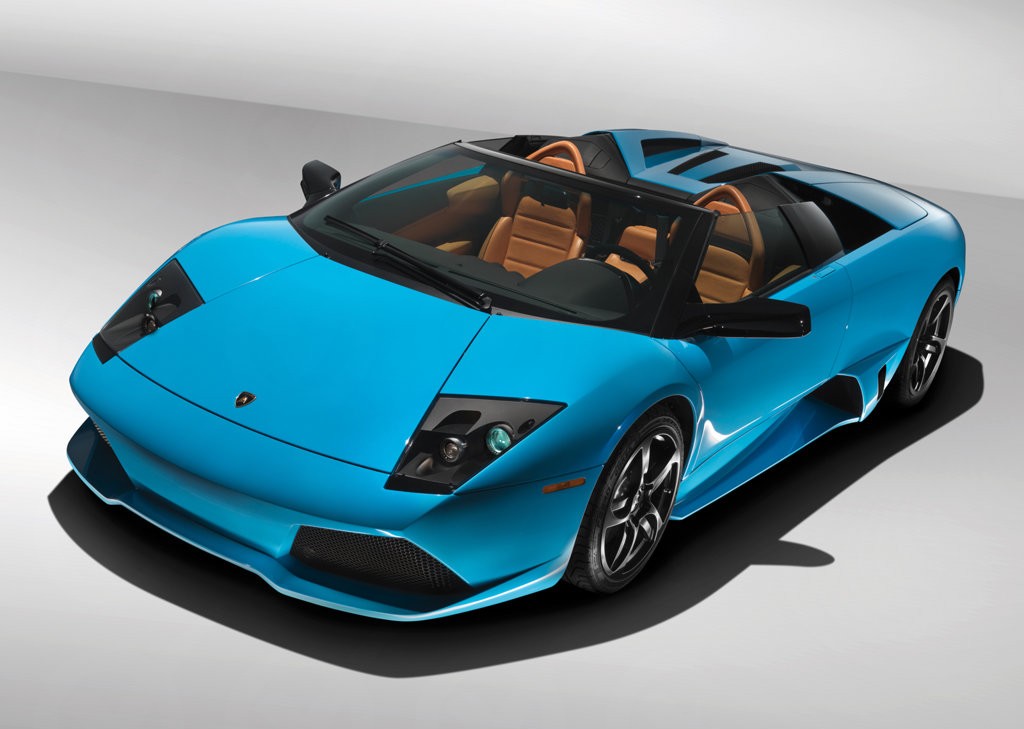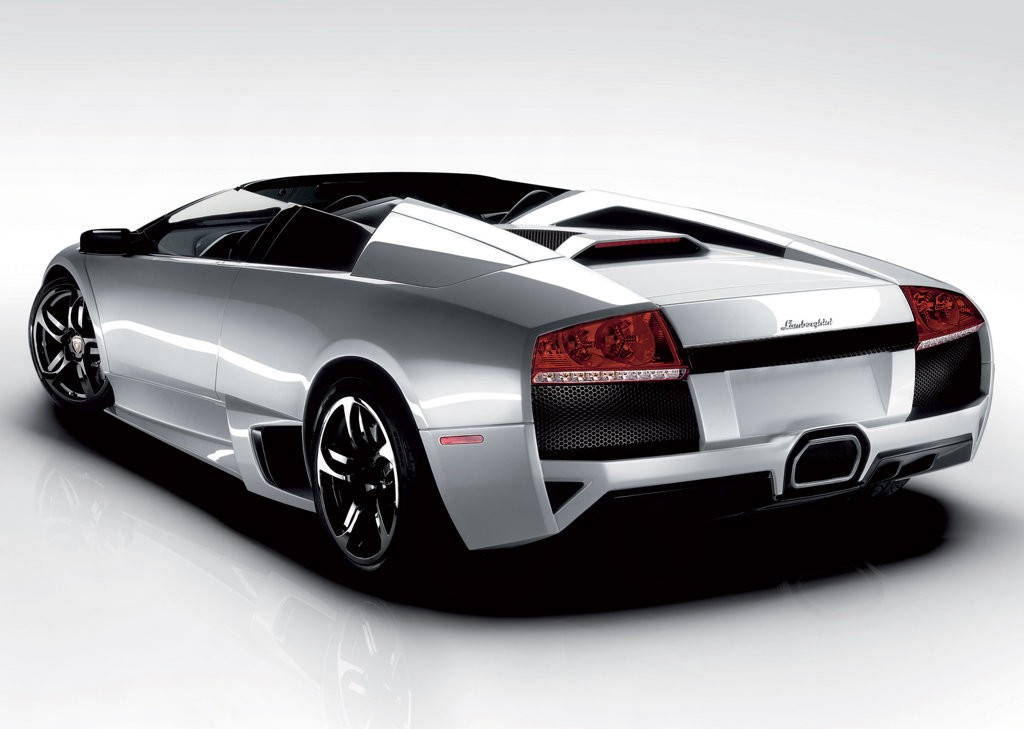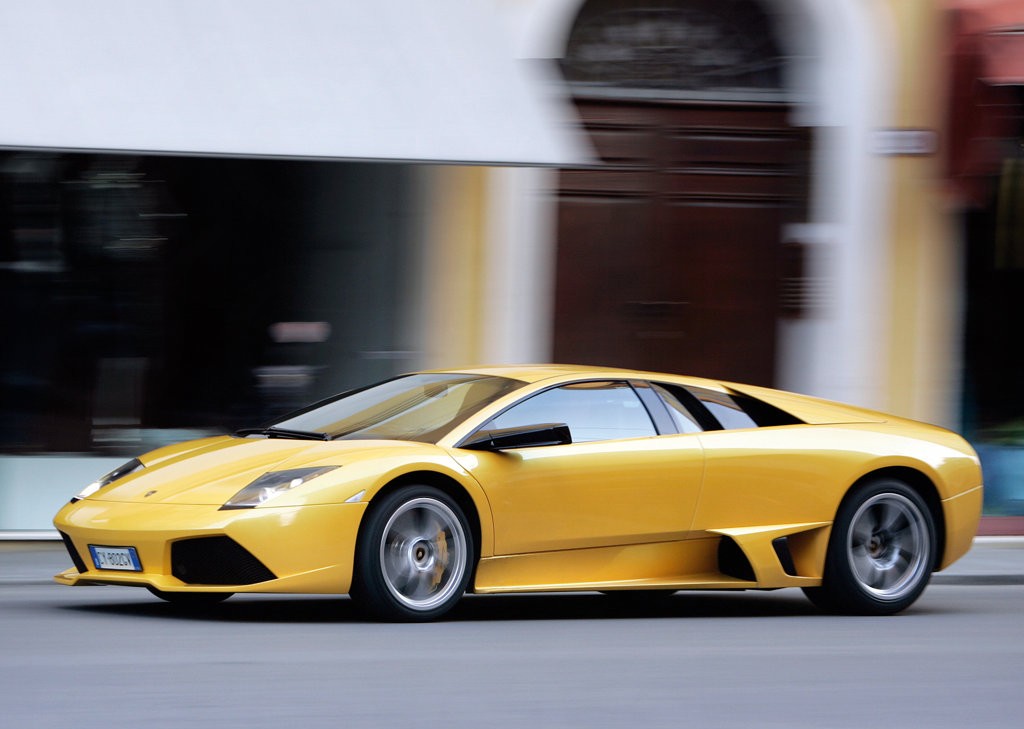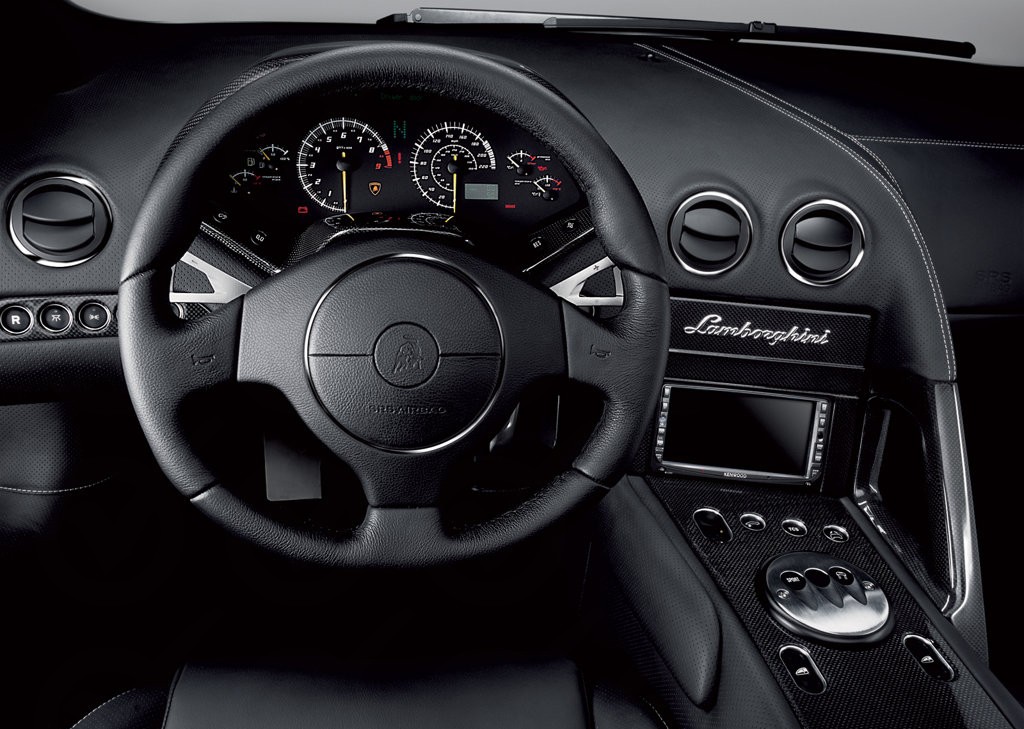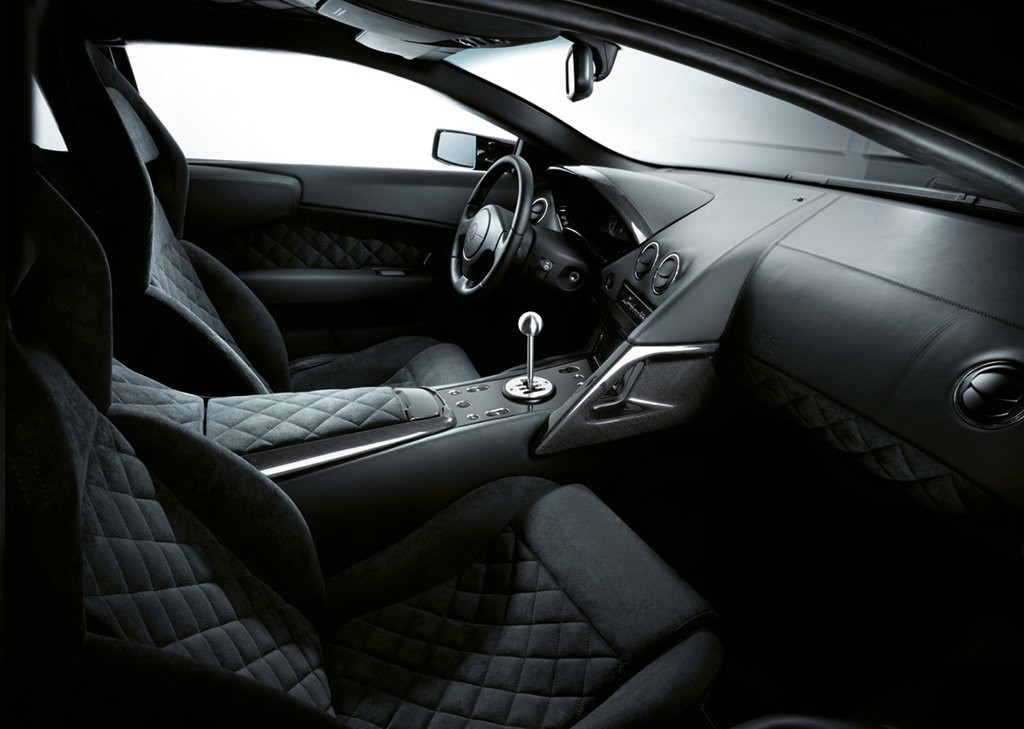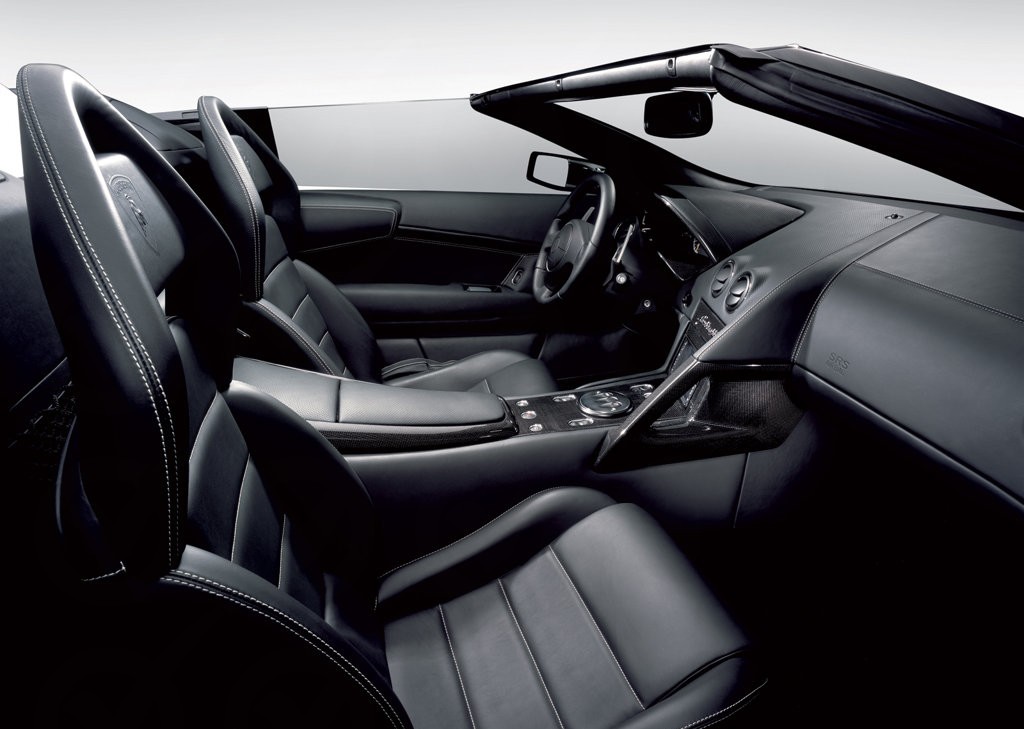
- Powerful 6.2-litre V12 petrol engine
- ‘Viscous Traction System’ provides immense traction
- Steering provides excellent feedback
- Handling characterised by understeer
- Dour cabin
- Poor rear visibility
- Width makes it impractical in urban areas
- High maintenance costs
Review: Lamborghini Murcielago (2002-06)
Overview
Released in September 2002, the Lamborghini Murcielago was initially available as a coupe, with roadsters following in 2005. Manufactured in Sant’Agata Bolognese, Italy, the all-wheel drive Murcielago was powered by a mid-mounted 6.2-litre V12 petrol engine from 2002 to 2006. This engine was initially mated to a six-speed manual transmission; from March 2004, however, the Murcielago was also available with a six-speed electro-hydraulically controlled semi-automatic ‘E-Gear’ transmission which could be controlled via steering wheel gearshift paddles.
Engine
The 6.2-litre V12 petrol engine had an aluminium alloy block and cylinder head, dry sump lubrication, double overhead camshafts, four valves per cylinder, variable valve timing (VVT) for inlet and exhaust camshafts, a variable geometry intake system (VIS) and a compression ratio of 10.7:1. The engine was also fitted with a Variable Air-flow Cooling System (VACS) which varied the aperture of the air intakes according to cooling requirements. As a coupe with a manual transmission, the Murcielago could accelerate from rest to 100 km/h in 3.8 seconds and had a maximum top speed of 330 km/h.
Development and dimensions
The Murcielago had a tubular steel frame chassis, carbon fibre structural elements (attached to the steel frame using a combination of adhesives and rivets) and, for coupes, a steel roof for coupes. As a result, coupe models had torsional rigidity in excess of 20,000 Nm per degree.
Designed by Luc Donckerwolke, the Murcielago was 4580 mm long, 2045 mm wide, 1135 mm tall (1065 mm for roadsters) and had a 2665 mm long wheelbase.
Suspension
The Murcielago had independent, double wishbone suspension front and rear with Koni FSD (Frequency Selecting Dampers) self-adjusting shock absorbers.
| Body | Engine | Drive | Trans. | Years | Peak power | Peak torque |
|---|---|---|---|---|---|---|
| Coupe | 6.2-litre petrol V12 |
AWD | 6sp man. | 2002-06 | 426 kW at 7500 rpm |
650 Nm at 5400 rpm |
| 6sp semi-auto | 2004-06 | |||||
| Convertible | 6.2-litre petrol V12 |
AWD | 6sp man., 6sp semi-auto |
2005-06 | 426 kW at 7500 rpm |
650 Nm at 5400 rpm |
Viscous Traction System
The Murcielago’s ‘Viscous Traction System’ consisted of a viscous coupling that was integrated into the centre differential. In normal conditions, the system provided full-time all-wheel drive with a 30:70 front:rear torque split. When the front and rear axles rotated at different speeds, the viscosity of the silicone within the coupling would increase and lock the driveshafts.
The Murcielago was also fitted with limited slip rear and front differentials (with 45 per cent locking at the rear and 25 per cent locking at the front).
Safety equipment
Standard safety equipment included dual front airbags, ABS, electronic brake force distribution, brake assist, electronic stability control and traction control.
The Murcielago was fitted with 380 mm by 34 mm front and 355 mm by 32 mm rear brake discs with four-piston calipers (front and rear).
Features
Standard features included 18-inch alloy wheels with 245/35 ZR18 front and 335/30 ZR18 rear Pirelli Rosso tyres, an Alpine sound system with a three-disc CD player, climate control air conditioning, leather trim, bi-xenon headlights, a leather-wrapped steering wheel, remote central locking, power windows and heated mirrors, power folding mirrors and a trip computer.
The Murcielago’s rear spoiler was electronically controlled and had three different positions –
- Closed: for speeds up to 130 km/h;
- Partially open at 50 degrees: for speeds between 130 and 220 km/h; and,
- Fully open at 70 degrees: for speeds above 220 km/h.
Depending on the aperture of the air intakes and the rear spoiler, the Murcielago coupe’s drag coefficient could vary from 0.33 to 0.36 Cd.
Review: Lamborghini Murcielago (2006-10)
Overview
Released in October 2006, the Murcielago LP640 introduced a 6.5-litre V12 engine and revised suspension, exhaust and electrical systems. The clutch for the e-Gear semi-automatic transmission was also upgraded, while a tougher rear differential and new axle shafts were fitted. The e-Gear transmission could also be specified with an optional ‘Thrust’ (acceleration programme) mode.
Visually, the Murcielago LP640 could be identified by its more aggressive front and rear bumpers, with the exhaust outlets integrated into the diffuser on the rear bumper, and asymmetrical side air intakes as the left side had an aperture for cooling the oil radiator.
Inside, there were more comfortable seats with redesigned head restraints and ‘Q-citura’ stitching for the leather upholstery. The dashboard also featured a new instrumental panel with a Kenwood radio, 6.5-inch monitor and DVD/MP3/WMA player.
| Variant | Body | Years | Engine | Trans. | Peak power | Peak torque |
|---|---|---|---|---|---|---|
| LP640 | Coupe, Convertible |
2006-09 | 6.5-litre petrol V12 |
6sp man., 6sp semi-auto |
471 kW at 8000 rpm | 660 Nm at 6000 rpm |
| LP670-4 Super Veloce |
Coupe | 2010 | 6.5-litre petrol V12 |
6sp semi-auto | 493 kW at 8000 rpm | 660 Nm at 6500 rpm |
Murcielago LP670-4 Super Veloce
Released in 2010, the LP670-4 Super Veloce was more powerful than its LP640 counterparts due to its revised valve timing and upgraded intake system. Furthermore, its weight was reduced by approximately 100 kg due to the extensive use of carbon-fibre – including the seats and dashboard – and a lighter exhaust system. The LP670-4 Super Veloce was also fitted with 380mm by 36mm carbon-ceramic brakes with six-piston calipers front and rear.
Related links
